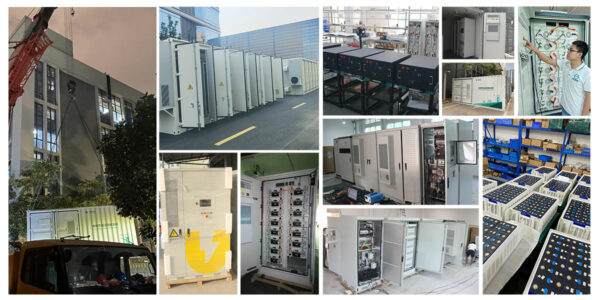Offshore Wind Energy: Weighing The Costs Against The Benefits

Table of Contents
The Environmental Benefits of Offshore Wind Energy
Offshore wind farms offer significant environmental advantages compared to fossil fuel-based power generation.
Reduced Carbon Emissions
The most significant benefit is the drastic reduction in greenhouse gas emissions. Offshore wind turbines produce clean energy, drastically cutting down on CO2 emissions.
- Studies show a reduction of up to 90% in CO2 emissions compared to coal-fired power plants.
- Offshore wind energy's carbon footprint is considerably smaller than that of other conventional energy sources like natural gas.
This reduction directly contributes to improved air quality and helps mitigate the effects of climate change, making a substantial positive impact on global environmental health.
Protection of Land Resources
Unlike onshore wind farms or solar installations, offshore wind energy doesn't require vast tracts of land.
- Offshore wind farms utilize previously unused ocean space, minimizing the impact on land ecosystems and agriculture.
- Coastal areas, often densely populated and valuable for other uses, are spared from large-scale energy infrastructure.
This preservation of land resources is critical in balancing energy production with the need to protect biodiversity and natural habitats.
Enhanced Biodiversity
Interestingly, offshore wind farms can even enhance marine biodiversity. The structures act as artificial reefs.
- Turbine foundations provide habitats for various marine species, including fish and invertebrates.
- The presence of these structures can lead to increased biodiversity in the surrounding ecosystem.
While there are potential negative impacts, such as noise pollution and habitat disruption during construction, careful planning and mitigation strategies can minimize these effects, resulting in a net positive environmental outcome.
The Economic Costs and Benefits of Offshore Wind Energy
While environmentally beneficial, offshore wind energy presents significant economic considerations.
High Initial Investment Costs
The upfront capital required for offshore wind projects is substantial.
- Turbine costs, foundation structures (monopiles, jackets, floating platforms), submarine cable installation, and grid connection represent major capital expenditures.
- The cost per megawatt (MW) of installed capacity is higher than that of onshore wind.
However, financing options like green bonds, government subsidies (e.g., tax credits, feed-in tariffs), and decreasing manufacturing costs are making these projects increasingly feasible. Long-term return on investment is significant, particularly considering increasing carbon taxes and the rising costs of fossil fuels.
Job Creation and Economic Growth
The offshore wind industry fosters significant job creation and economic growth.
- Jobs are created in manufacturing, installation, operation & maintenance, and in related sectors like logistics and supply chain.
- Regional economic benefits are substantial, especially for coastal communities.
Furthermore, local community involvement in project development can further enhance economic benefits and create a sense of ownership.
Long-Term Operational Costs
Ongoing costs for maintenance, repairs, and grid connection are significant, but are continuously decreasing with technological advancements.
- Regular inspections and maintenance of turbines, subsea cables, and other infrastructure are essential.
- Repair costs can be substantial following storms or equipment failure.
However, technological advancements in turbine design, materials science, and remote monitoring systems are aiming to reduce operational and maintenance costs, improving the long-term economic viability of offshore wind energy.
Technological Challenges and Advancements in Offshore Wind Energy
While the potential is vast, the development of offshore wind energy faces technological challenges.
Technological Hurdles
The harsh marine environment presents several challenges.
- Extreme weather conditions, such as strong winds and storms, pose significant risks to infrastructure.
- Transportation and installation logistics are complex and costly, especially for deeper water sites.
- Grid integration requires specialized infrastructure to manage the intermittent nature of wind power.
Innovative solutions, however, are constantly emerging to overcome these hurdles.
Advancements in Turbine Technology
Improvements in turbine design and manufacturing are key to enhancing efficiency and reducing costs.
- Larger turbine blades capture more wind energy.
- Advancements in materials science are leading to stronger, lighter, and more durable turbines.
These advancements significantly increase energy production and contribute to the cost competitiveness of offshore wind.
Smart Grid Integration
Efficient grid integration is crucial to manage the variability of wind power.
- Smart grid technologies optimize energy distribution and improve grid stability.
- Energy storage solutions, such as batteries, help smooth out fluctuations in wind power generation.
By improving grid management and incorporating storage, we can more effectively integrate large-scale offshore wind farms into existing power grids.
Conclusion
Offshore wind energy offers significant environmental benefits, primarily through substantial reductions in carbon emissions and the protection of land resources. While initial investment costs are high, job creation, economic growth, and decreasing operational costs are making offshore wind increasingly economically viable. Technological advancements continue to address challenges related to harsh marine environments and grid integration, further enhancing the potential of this renewable energy source. The long-term advantages of offshore wind power generation are undeniable. Learn more about offshore wind farms in your region and support policies that promote investing in offshore wind to build a more sustainable energy future.

Featured Posts
-
 Harvard President Tax Exempt Status Reversal Would Be Illegal
May 04, 2025
Harvard President Tax Exempt Status Reversal Would Be Illegal
May 04, 2025 -
 Hong Kongs First Us Dollar Intervention Since 2020 Maintaining The Peg
May 04, 2025
Hong Kongs First Us Dollar Intervention Since 2020 Maintaining The Peg
May 04, 2025 -
 Ryujinx Emulator Development Halted Nintendos Involvement Confirmed
May 04, 2025
Ryujinx Emulator Development Halted Nintendos Involvement Confirmed
May 04, 2025 -
 Financial Models For A 270 M Wh Battery Energy Storage System Bess Project In Belgium
May 04, 2025
Financial Models For A 270 M Wh Battery Energy Storage System Bess Project In Belgium
May 04, 2025 -
 Rethinking Middle Management Why They Are Key To A Thriving Business
May 04, 2025
Rethinking Middle Management Why They Are Key To A Thriving Business
May 04, 2025
Latest Posts
-
 Decoding The First Round Your Guide To The Nhl Stanley Cup Playoffs
May 04, 2025
Decoding The First Round Your Guide To The Nhl Stanley Cup Playoffs
May 04, 2025 -
 Broadcoms Proposed V Mware Price Hike An Extreme 1050 Increase
May 04, 2025
Broadcoms Proposed V Mware Price Hike An Extreme 1050 Increase
May 04, 2025 -
 Gold Price Dips Consecutive Weekly Losses In 2025
May 04, 2025
Gold Price Dips Consecutive Weekly Losses In 2025
May 04, 2025 -
 Nhl Stanley Cup Playoffs A Guide To First Round Matchups
May 04, 2025
Nhl Stanley Cup Playoffs A Guide To First Round Matchups
May 04, 2025 -
 Stanley Cup Playoff Viewership A Us Decline An International Rise
May 04, 2025
Stanley Cup Playoff Viewership A Us Decline An International Rise
May 04, 2025
